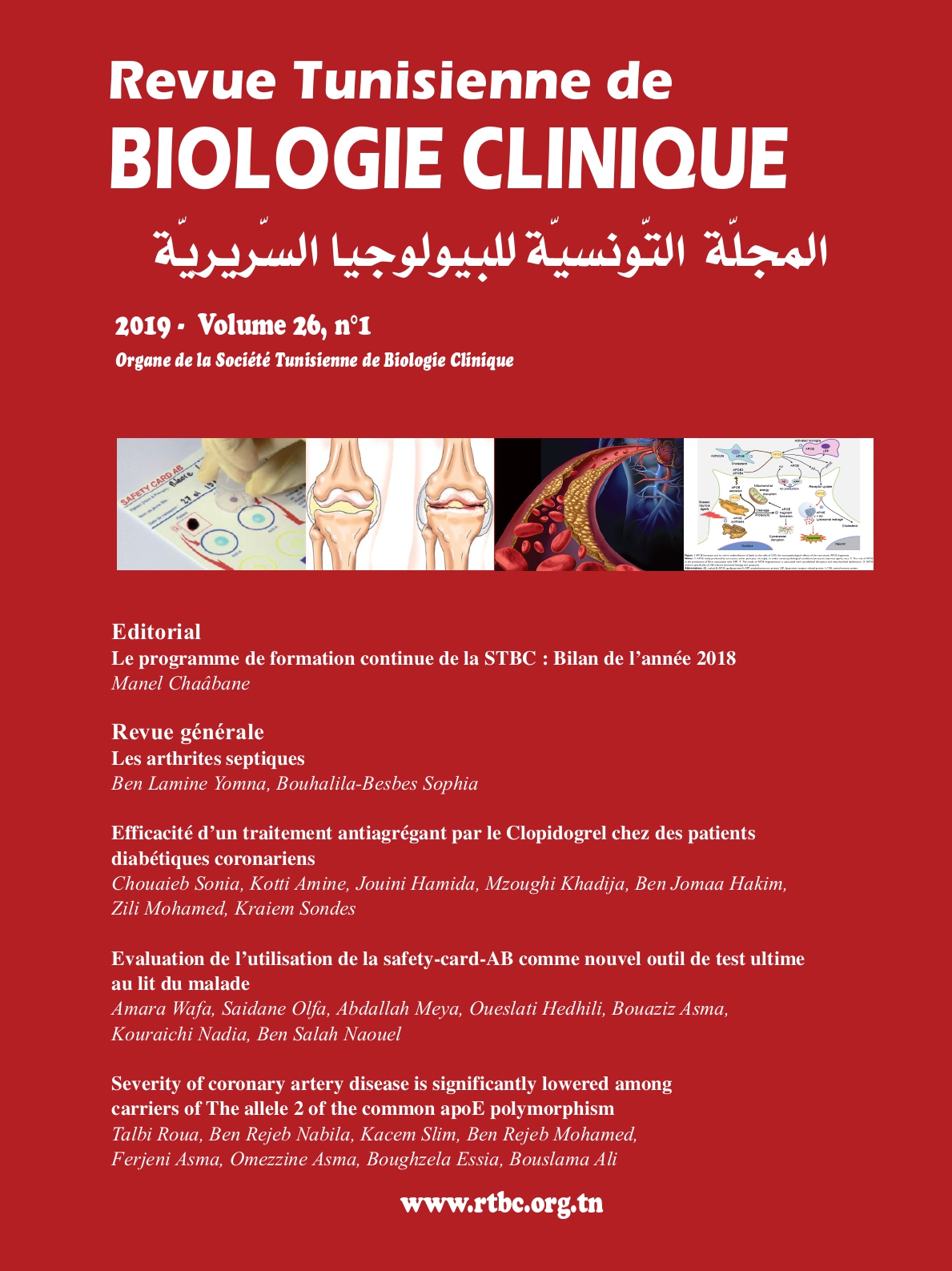Abstract
Thienopyridines are used in the prevention of atherothrombotic complications. There is an interindividual variability in platelet response to Clopidogrel in a large proportion of treated patients. Patients with type 2 diabetes have not only a higher risk of coronary disease, but also a lower response to clopidogrel. Aim: Evaluate the response to clopidogrel in coronary diabetics through the study of platelet aggregation and to determine the predictors of a poor response to clopidogrel. Material and methods:This is a transversal study over 6 month period performed in university hospital Habib Thameur in Tunis. It included 34 coronary patients with type 2 diabetes and acute coronary syndrom treated with clopidogrel and aspirin. Platelet function was assessed by light transmission aggregometry using adenosine diphosphate (5 micromol/L). Patients with a maximum aggregation above 46% were considered as having platelet hyperactivity during treatment with Clopidogrel. Results: The prevalence of resistance in our population was 70.6%. In univariate analysis, age (p = 0.037), smoking (p=0.024), history of acute coronary syndromes (p = 0.024) and diagnosis of stable angina (p = 0.034) and bi-truncal lesion (p = 0.034) was identified as predictive factors of clopidogrel resistance. In multivariate analysis, only smoking was associated with clopidogrel resistance. Conclusion: Diabetes is an independent risk factor for mortality and myocardial disease in acute coronary syndrome. The prevalence of HTPR under clopidogrrel is high in diabetics. New generation antiaggregants appear to be a satisfactory solution in these patients.

This work is licensed under a Creative Commons Attribution 4.0 International License.
Copyright (c) 2019 Revue Tunisienne de BIOLOGIE CLINIQUE

